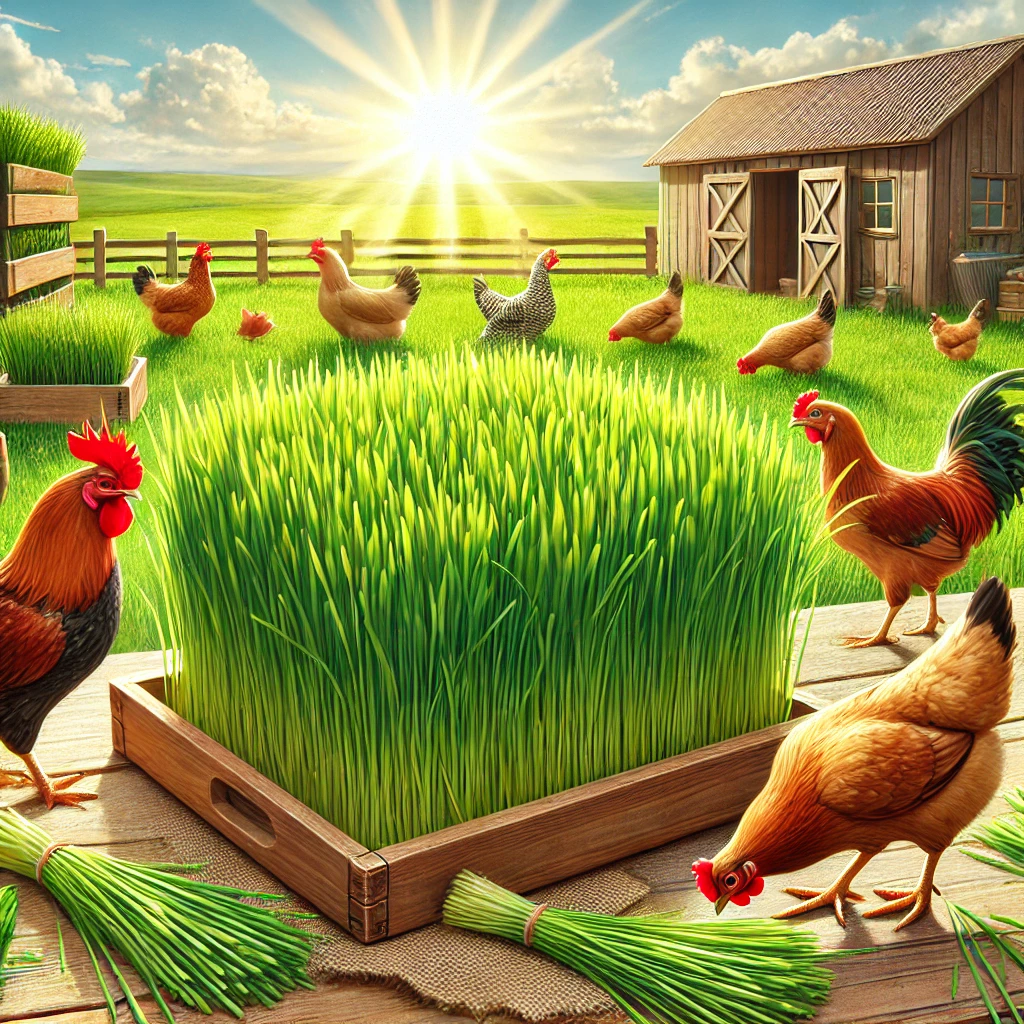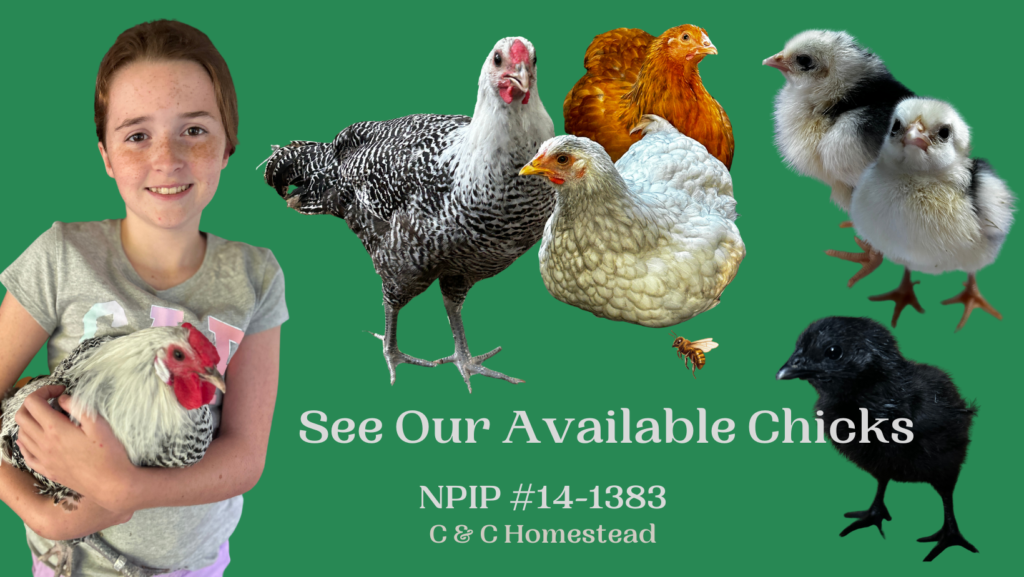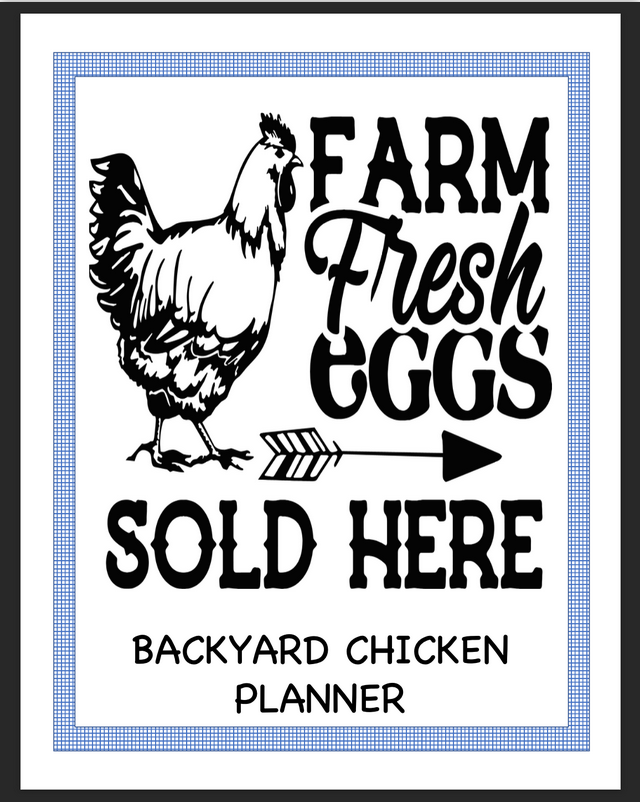Balancing Corporate & Homesteading Lifestyles
Healthy Herb For Chickens: Wheatgrass

Wheatgrass is a highly nutritious and beneficial addition to your chickens' diet. It can be grown easily and provides a range of health benefits, making it a popular choice for backyard poultry enthusiasts. Here’s a detailed look at why and how to incorporate wheatgrass into your chickens’ diet.
Nutritional Benefits of Wheatgrass
- Rich in Vitamins and Minerals:
- Vitamins: Wheatgrass is an excellent source of vitamins A, C, E, and K. These vitamins are crucial for maintaining healthy skin, feathers, and immune system function.
- Minerals: It contains essential minerals such as calcium, magnesium, iron, and phosphorus, which are vital for bone health and metabolic functions.
- Antioxidants:
- Wheatgrass is packed with antioxidants that help combat oxidative stress and support overall health. This can lead to better egg production and improved feather quality.
- Digestive Health:
- The fiber content in wheatgrass aids in digestion and promotes a healthy gut flora. It can help prevent digestive issues and improve nutrient absorption.
- Detoxification:
- Wheatgrass has natural detoxifying properties that can help cleanse the liver and blood, promoting overall health and vitality in chickens.
Growing Wheatgrass
- Materials Needed:
- Wheatgrass seeds (organic, untreated)
- Growing trays or shallow containers
- Potting soil or hydroponic growing medium
- Water
- Spray bottle
- Steps to Grow Wheatgrass:
- Soak Seeds: Soak the wheatgrass seeds in water for 8-12 hours.
- Prepare Trays: Fill the trays with soil or a hydroponic medium.
- Sow Seeds: Spread the soaked seeds evenly over the surface of the soil.
- Watering: Lightly water the seeds and keep the soil moist but not waterlogged. Use a spray bottle for even distribution.
- Germination: Place the trays in a warm, dark place until the seeds germinate, which usually takes 2-3 days.
- Growth: Once the seeds have sprouted, move the trays to a sunny location or under grow lights. Water daily to keep the soil moist.
- Harvesting: Wheatgrass is ready to harvest when it reaches 6-8 inches in height, usually within 7-10 days. Cut the grass close to the base using scissors.
Feeding Wheatgrass to Chickens
- Preparation:
- Cut the wheatgrass into manageable pieces to prevent choking and ensure easy consumption.
- Serving:
- You can place the cut wheatgrass directly in the chicken run or mix it with their regular feed. It can also be used as a foraging treat, encouraging natural behaviors.
- Frequency:
- Wheatgrass should be given as a supplement to their regular diet. A handful of wheatgrass per chicken, a few times a week, is sufficient.
- Monitoring:
- Observe your chickens to ensure they are eating the wheatgrass and not just playing with it. Adjust the amount based on their consumption and interest.
Benefits for Chickens
- Improved Egg Quality:
- The high nutrient content in wheatgrass can lead to stronger eggshells and richer yolks.
- Enhanced Immune System:
- The vitamins and antioxidants in wheatgrass boost the immune system, helping chickens fend off illnesses.
- Better Feather Condition:
- The nutrients promote healthy feather growth and can help with molting.
- Increased Vitality:
- Regular consumption of wheatgrass can lead to more active and vibrant chickens.
Conclusion
Incorporating wheatgrass into your chickens’ diet is a simple and effective way to enhance their overall health and well-being. It provides essential nutrients, supports digestion, boosts immunity, and promotes better egg production. By growing and feeding wheatgrass regularly, you can ensure your flock stays healthy and happy.



